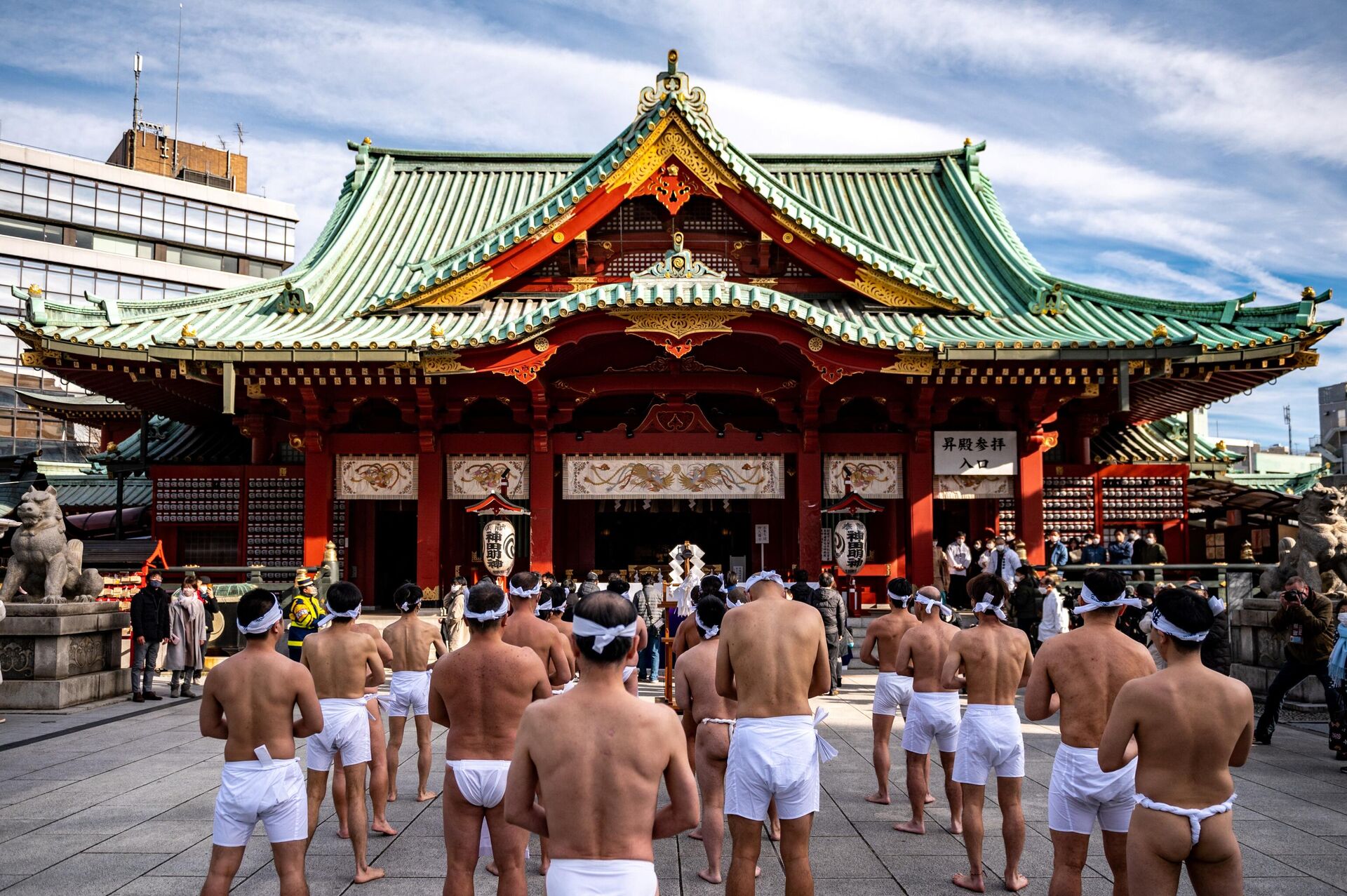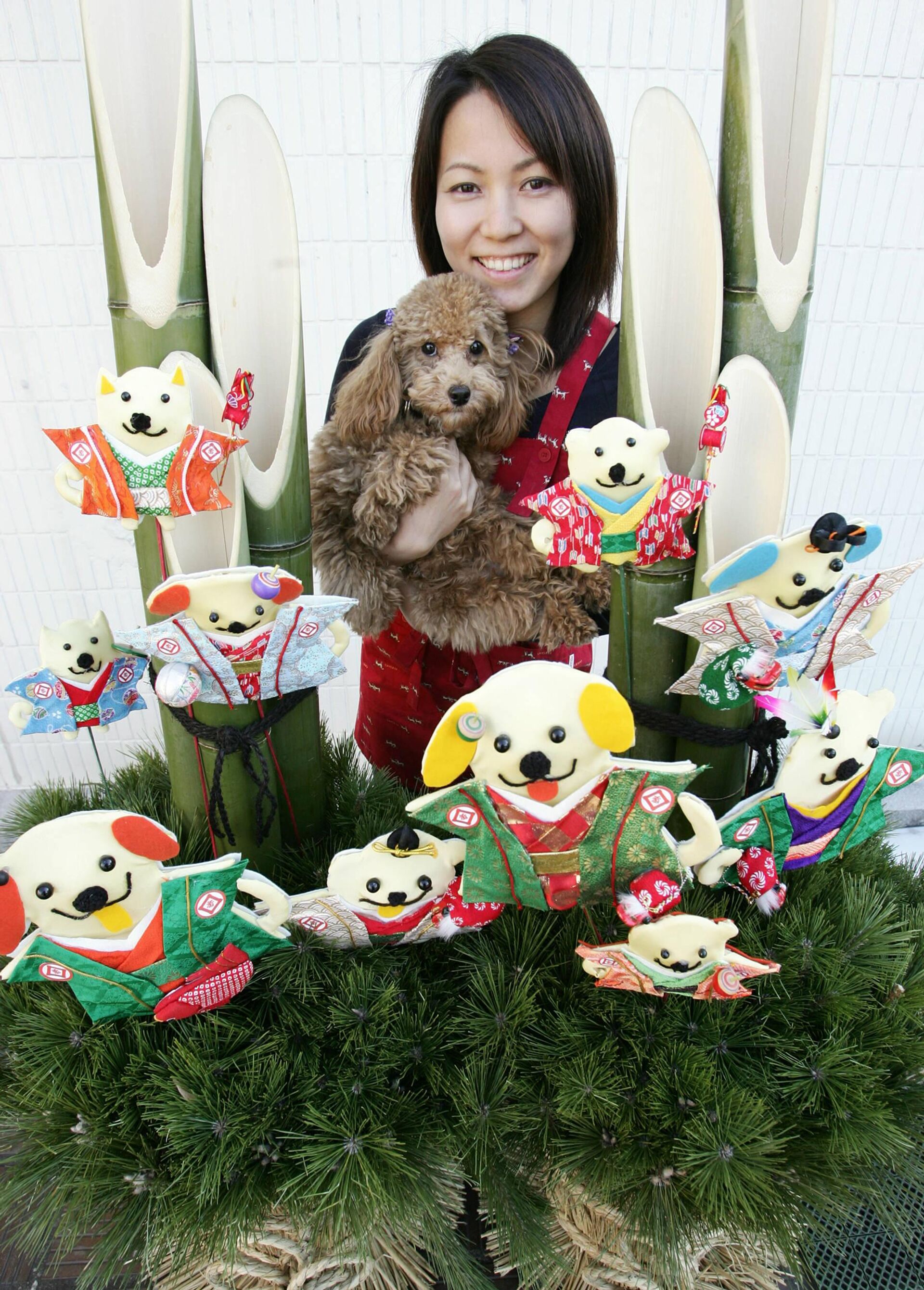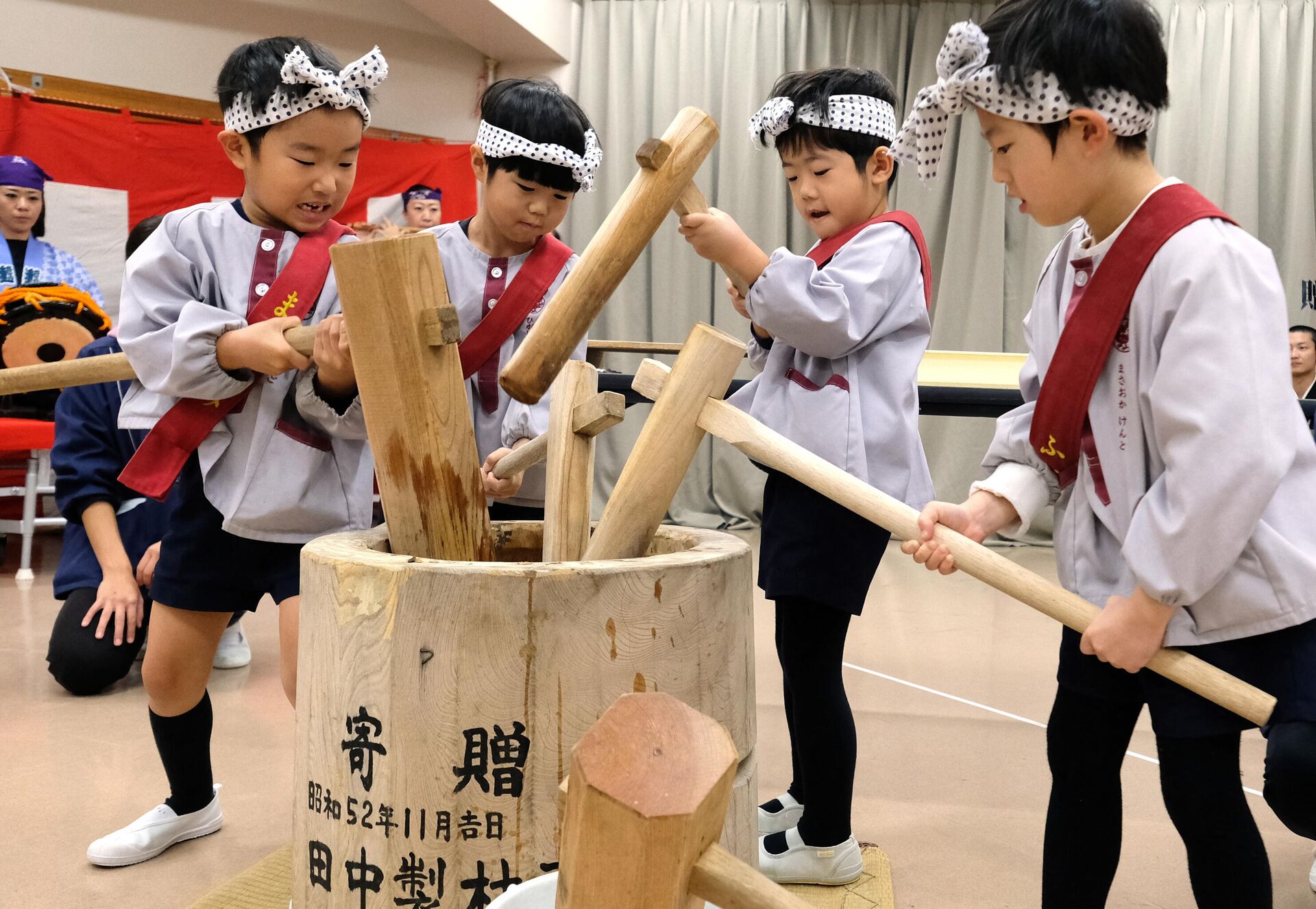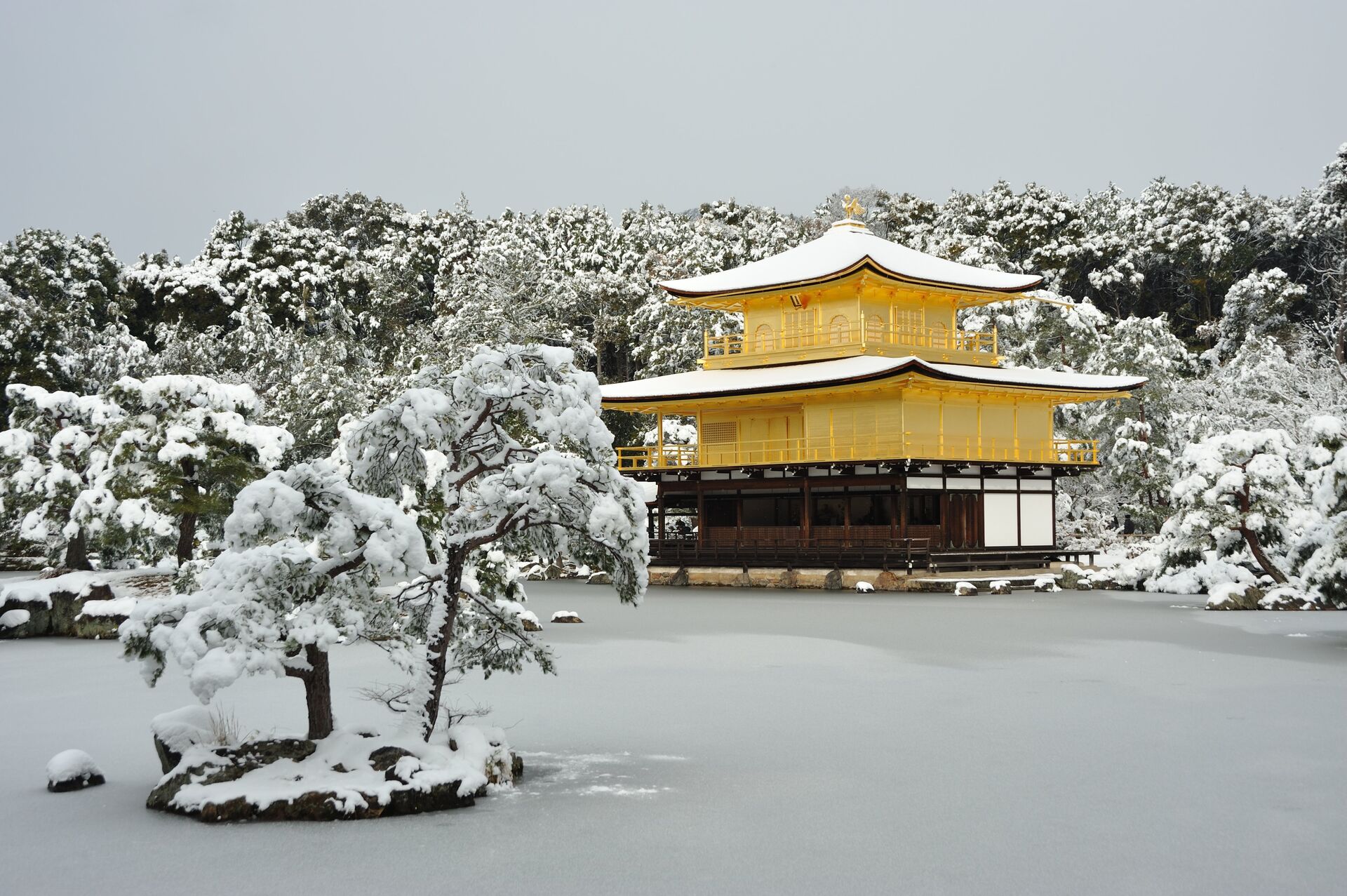New Year the Japanese Way: Start Your Life From Scratch

© AFP 2023 / TOSHIFUMI KITAMURA
Subscribe
New Year's Day is the most beloved and colorful holiday in Japan. The Japanese have been celebrating it since 1873 on January 1 by the western calendar. However, the custom of celebrating the Christian Christmas preceding the New Year did not become an integral part of Japanese cultural tradition until a century later, in the 1970s.
Christmas Day, the Best Time for Romantic Encounters
Most Japanese view Christmas as completely devoid of religious content, as the number of Christians in the country does not exceed 1% - 2% of the population. Japanese Christmas is enveloped in an atmosphere of love. Unmarried Japanese traditionally spend Christmas Eve together with their beloved ones, making a romantic love date in some restaurant. It is on Christmas Eve that it is customary in Japan to declare one's love and propose marriage.
Japanese children also love Christmas. After all, kind Santa Claus will not leave anyone without a gift: he will put their favorite treats in a beautiful red boot and wrap toys in shiny paper, which they have been dreaming of for the whole year.
Christmas in Japan is not a public holiday and a day off, but this does not prevent the Japanese from spending Christmas Eve with so much joy that it will last the whole year until the next Christmas.
Can't Miss Your Encounter with Gods of Happiness on New Year
New Year's Day is the most important and favorite holiday in the Japanese calendar. People begin to prepare for it in advance. After all, it is important to observe all the centuries-old traditions so that nothing interferes with the dignity of meeting their Gods of Happiness.

Shinto believers of the Kanda Myojin Shrine prepare to pray before a bath in cold water to purify their souls and bodies during a New Year ritual in Tokyo on January 15, 2022. (Photo by Philip FONG / AFP)
© AFP 2023 / PHILIP FONG
New Year's Cards
All post offices in Japan are already flooded at the beginning of December with New Year's greeting cards written by both adults and children. They write cards to acquaintances, relatives, friends, and, most importantly, mentors and teachers, "senseis". Even elementary school students write and receive at least 20 greeting cards themselves.
‘Kadomatsu’ the Gate Pine
“Kadomatsu”, an ornamental decoration of pine, bamboo, fern and other plants, is usually placed over the door or gate with a rope woven from rice straw. This is done to block the path of all the evil forces and not let them sneak into the coming year. The good spirits, on the contrary, will find shelter and rest in the fragrant pine needles.

Hiromi Otsuka, employee of a pet shop at Ginza Matsuzakaya department store, holds a poodle in front of a pair of "kadomatsu", or pine branches with dog-shaped decoration in Tokyo, 31 December 2005.
© AFP 2023 / TORU YAMANAKA
'Mochi', Traditional Japanese Rice Cake
New Year's Day in Japan can't be imagined without a “mochi”. These delicate rice cakes made from well-beaten glutinous rice, painted in different colors, are not just New Year's food, but also a festive offering to the Gods to ensure that they take proper care of the family's well-being in the coming year. People place mochi on the table and use them as ornaments on branches of willow and bamboo. At the end of the New Year's festivities, each member of the family must traditionally eat as many "mochi" as many years he or she turns this year.

Japanese kindergarten children wearing traditional headwear use wooden hammers to pound steamed rice into a mochi rice cake during the annual mochi-tsuki event to celebrate the New Year at a kindergarten in Tokyo on December 6, 2018. (Photo by Kazuhiro NOGI / AFP)
© AFP 2023 / KAZUHIRO NOGI
Family New Year's Meal
On the evening of December 31, the family gathers around the table for the New Year's meal. The adults precede it with a sip of rice wine. Each dish on the New Year's table has a symbolic meaning. For example, endless buckwheat noodles "soba" symbolize longevity, rice cakes symbolize prosperity in the family, beans symbolize health, carp symbolize strength, and herring caviar ensures a happy family and many children. It is not customary to party loudly at the table on New Year's Eve, because you need to prepare internally for the purification of the soul and the meeting of the seven Gods of Happiness.
Bell Rings 108 Times
A few minutes before the New Year, bells ring at Buddhist temples throughout Japan. They strike exactly 108 times, one for each of the worldly passions and worries that beset a person. Having thus freed themselves from previous sins and worries, the Japanese feel ready to begin a new life. In their new life, the Japanese believe they will receive help from the seven Gods of Happiness, who arrive in Japan on a magic ship with the last strike of the bell.
They are the Gods of good luck, sincerity, friendliness, dignity, longevity, generosity, and benevolence. The first day of the New Year begins with a visit to the temple, and then you can have fun and fool around with all your heart, rejoicing in your new birth in the New Year.




